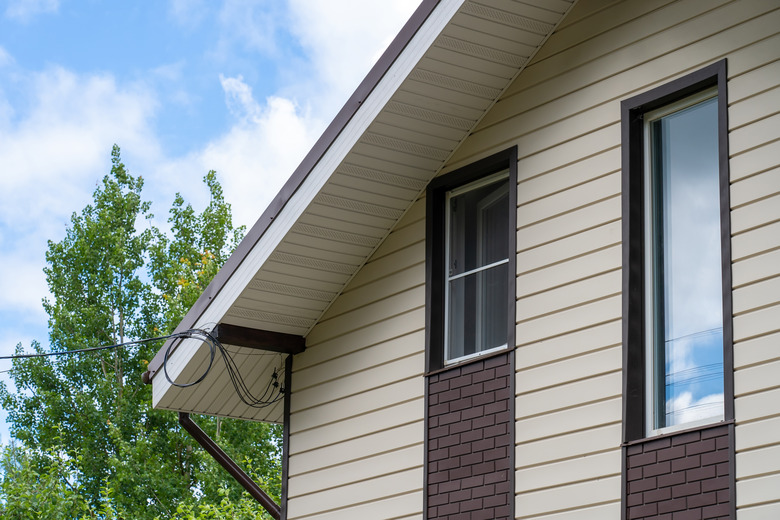What Is The Difference Between Soffit And Fascia?
We may receive a commission on purchases made from links.
At the edge of your home's roof, the soffit and fascia play a crucial role in the performance of your roof. They do more than simply look good, and although it's true that the soffit and fascia work together to help your roof protect your home, the jobs they do are quite different from one another. In fact, there are several actively performing parts at the edge of your roof. Here's a look at the elements that make up and protect a roof's edge while allowing your roof to do its best work.
Eaves and Rakes
Eaves and Rakes
Your roof's eaves and rakes each provide an overhang at the roof's edge. The overhang allows water to flow over and off, discouraging it from curling back toward the house and running down the exterior wall.
Eaves and rakes are distinguishable by their location on the house. Eaves are horizontal structures that extend from the bottom of a roof section. Rakes also extend the roof line but do so along the angled slope of the roof.
Subfascia and Fascia
Subfascia and Fascia
Subfascia and fascia support and protect the ends of the rafters. Subfascia is tacked directly to the cut ends of the roof rafters along the length of the house. It's typically two-by nominal lumber and is often left out of the building plans in favor of thinner fascia boards.
Fascia refers to the decorative and protective boards installed on the front of the subfascia or onto the rafter ends in the absence of an underlying support board. Wood, PVC, and fiber-cement board are common fascia materials. Fascia also refers to aluminum or vinyl trim pieces that cover the fascia boards but is too thin to provide structural support.
Rake Boards and Rake Trim
Rake Boards and Rake Trim
Rake boards make up the rough-lumber structures following the roof's slope on a gable end. They may be 3/4- or 1-inch-thick boards extending from the roof line. Rake trim refers to the protective and decorative pieces that cover and protect the rake boards or gable rafter extensions. Some homes have rake boards that are flush with the exterior wall.
Soffits, Soffit Venting, and Rafter Bays
Soffits, Soffit Venting, and Rafter Bays
Soffits can be described as the underside of the eaves or the material that covers the rake extensions and rafter tails extending beyond the perimeter of the exterior walls. Typical soffit materials are aluminum, vinyl, and wood. Soffits provide protection from the weather and keep critters out of your attic.
Soffit venting is a type of air vent that allows air to pass through as make-up air for warmer air that escapes through the roof vents above. Soffit venting may be built into the soffit material itself or individual vent components.
Rafter bays are the spaces between the roof's rafters. The spaces allow air that has passed through the soffit vents to reach the attic.
Drip Edge and Gutters
Drip Edge and Gutters
Drip edge and gutters both work to shed water from the roof. Drip edge has a flat top section that lies under the roofing material. The other side of the drip edge overlaps the top of the fascia or rake edge and folds outward to force water to drip, guiding it into the gutters.
Gutters attach to the outside of the fascia and direct water from the roof and away from the home's foundation.
